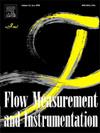Application of enhanced hybrid optimization models for discharge prediction of cosine sharp-crested weirs
IF 2.3
3区 工程技术
Q2 ENGINEERING, MECHANICAL
引用次数: 0
Abstract
The discharge coefficient plays a crucial role in estimation of discharge over sharp-crested weirs. This study employs various hybrid optimization algorithms to predict the discharge coefficient over half-cycle and full-cycle cosine sharp-crested weirs. A Support Vector Machine (SVM) algorithm was utilized, with its parameters optimized using the Gray Wolf Optimization (GWO) algorithm. The performance of the GWO-SVM hybrid model was compared against the Gaussian Process Regression (GPR) model. Additionally, Gene Expression Programming (GEP) was applied to derive the best predictive equations for both weir types. For this purpose, a broad range of laboratory data, comprising geometric and hydraulic information (110 data sets for half-cycle and 270 data sets for full-cycle cosine weirs), has been considered. The results indicated that the GWO-SVM model demonstrated high accuracy, particularly in peak discharge predictions, achieving errors below 4 %. The proposed models incorporated the influence of the approach Froude number, a critical factor often overlooked in prior discharge prediction models. Sensitivity analysis revealed that the ratio of weir height to upstream water head (ho/P) and Froude number play significant roles in prediction of discharge coefficient for cosine sharp-crested weirs. The frequency histogram of prediction for half- and full-cycle cosine sharp-crested weirs showed that the GEP model exhibited a uniform error distribution with a slight underprediction tendency, whereas regression models were less reliable for both weir types. Overall, the AI-based models outperformed conventional regression approaches, effectively minimizing underpredictions and overpredictions, and providing robust discharge coefficient predictions.
增强混合优化模型在余弦尖顶堰流量预测中的应用
流量系数在陡峰堰流量估算中起着至关重要的作用。本研究采用多种混合优化算法预测半周期和全周期余弦尖顶堰的流量系数。采用支持向量机(SVM)算法,并采用灰狼优化(GWO)算法对其参数进行优化。将GWO-SVM混合模型与高斯过程回归(GPR)模型进行性能比较。此外,应用基因表达式编程(GEP)对两种堰型分别推导出最佳预测方程。为此,考虑了广泛的实验室数据,包括几何和水力信息(半周期110个数据集和全周期270个数据集)。结果表明,GWO-SVM模型具有较高的预测精度,特别是在峰值放电预测中,误差在4%以下。提出的模型纳入了弗劳德数的影响,这是一个在先验流量预测模型中经常被忽视的关键因素。敏感性分析表明,堰高与上游水头之比(ho/P)和弗劳德数对余弦尖顶堰流量系数的预测有显著影响。半周期和全周期余弦尖峰堰的预测频率直方图表明,GEP模型误差分布均匀,有轻微的预估过低趋势,而回归模型对两种堰的预测可靠性较差。总体而言,基于人工智能的模型优于传统的回归方法,有效地减少了低估和高估,并提供了稳健的流量系数预测。
本文章由计算机程序翻译,如有差异,请以英文原文为准。
求助全文
约1分钟内获得全文
求助全文
来源期刊

Flow Measurement and Instrumentation
工程技术-工程:机械
CiteScore
4.30
自引率
13.60%
发文量
123
审稿时长
6 months
期刊介绍:
Flow Measurement and Instrumentation is dedicated to disseminating the latest research results on all aspects of flow measurement, in both closed conduits and open channels. The design of flow measurement systems involves a wide variety of multidisciplinary activities including modelling the flow sensor, the fluid flow and the sensor/fluid interactions through the use of computation techniques; the development of advanced transducer systems and their associated signal processing and the laboratory and field assessment of the overall system under ideal and disturbed conditions.
FMI is the essential forum for critical information exchange, and contributions are particularly encouraged in the following areas of interest:
Modelling: the application of mathematical and computational modelling to the interaction of fluid dynamics with flowmeters, including flowmeter behaviour, improved flowmeter design and installation problems. Application of CAD/CAE techniques to flowmeter modelling are eligible.
Design and development: the detailed design of the flowmeter head and/or signal processing aspects of novel flowmeters. Emphasis is given to papers identifying new sensor configurations, multisensor flow measurement systems, non-intrusive flow metering techniques and the application of microelectronic techniques in smart or intelligent systems.
Calibration techniques: including descriptions of new or existing calibration facilities and techniques, calibration data from different flowmeter types, and calibration intercomparison data from different laboratories.
Installation effect data: dealing with the effects of non-ideal flow conditions on flowmeters. Papers combining a theoretical understanding of flowmeter behaviour with experimental work are particularly welcome.
 求助内容:
求助内容: 应助结果提醒方式:
应助结果提醒方式:


